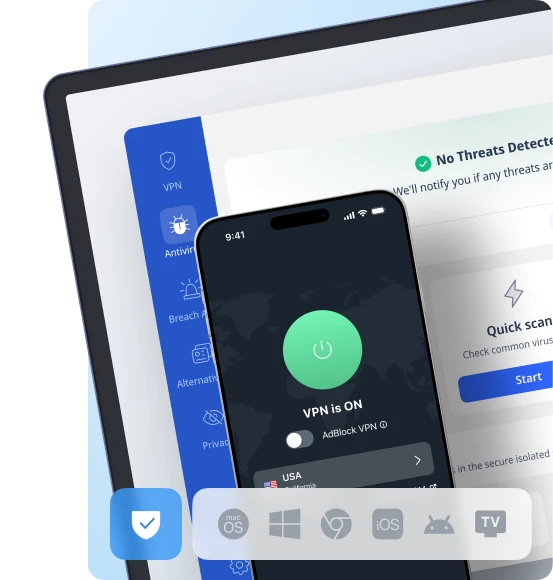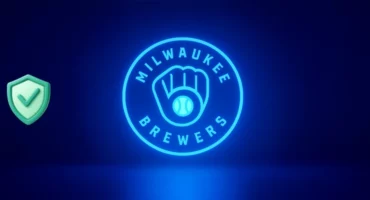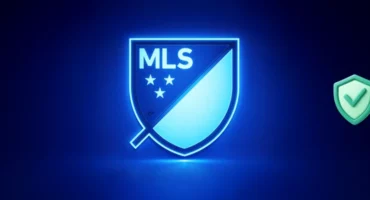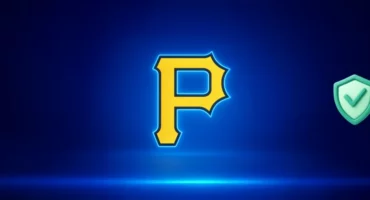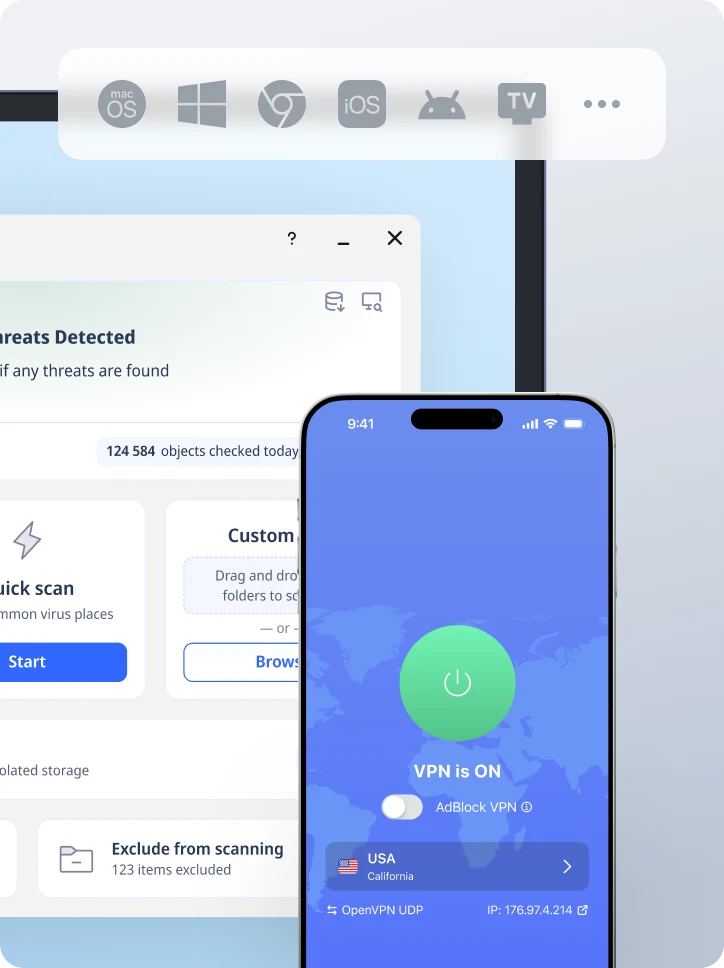This Password Has Appeared In a Data Leak: What iPhone Users Need to Know
Let’s get one thing straight: owning an iPhone doesn’t make you immune to data leaks. Sure, Apple is big on privacy, but that doesn’t mean your passwords, email or even health data are safe by default. With breaches happening left and right, even the most cautious iPhone user can end up exposed without realizing it.
Sometimes the first warning sign is a notification you never expected: “This password has appeared in a data leak.”If you’ve seen this on your iPhone, take it seriously. Users are alerted via notifications on their iPhone when their credentials are found in a data leak. These notifications are designed to prompt immediate action to secure affected accounts.
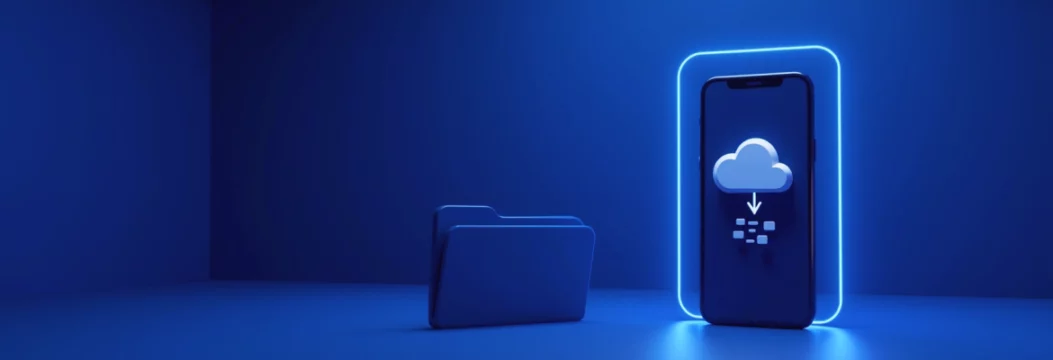
Stay protected with VeePN from the first click
Even if you follow best practices, your data can still be intercepted, sold or stolen. That’s where VeePN comes in as your first line of defense. Here’s how it protects you:
- Private IP address for total anonymity. VeePN hides your real IP so websites, trackers and bad actors can’t tie your actions back to you.
- Military-grade encryption. Your data is wrapped in AES-256 encryption, so even if you’re using public WiFi, it stays out of the wrong hands.
- Breach Alert feature. VeePN detects risky connections or compromised sites before they reach you, giving you time to act.
- Strict No Logs policy. Unlike shady VPNs or even some browsers, VeePN doesn’t store or sell your browsing activity—because your data is yours. VeePN does not keep a log of your online activities, ensuring your browsing history and login attempts are not recorded or monitored.
- Cross-platform protection. Use it on your iPhone, MacBook, or iPad — up to 10 devices on one plan.
What is a data breach?
It is the situation when your sensitive data; passwords, credit card details or personal information is accessed by a person or stolen by other people who are not entitled to them. This may happen through hacking, a phishing attack, malware or even human error.
There is no single firm or online resource that cannot become the target of a data breach: any organization, regardless of size and industry, can be attacked by a hacker. Once your data leaks, your account credentials and other confidential information might fall at the disposal of a bad actor on the dark web. This exposes your online account, financial security and even identity. The information that the hacker gets can be used to get into your accounts, where it can steal your money or may use it to impersonate you.
Why iPhones aren’t invincible
Apple does a good job securing your device, but it can’t control what happens on third-party websites. However, there are still risks involved if you rely solely on Apple’s security features, as data breaches and cybersecurity threats can occur outside their ecosystem. Many leaks come from:
- E-commerce platforms with poor backend security
- Social apps that stored data in plaintext
- Health or finance apps that weren’t vetted properly
- Using a weak password, which increases your vulnerability to hackers and data leaks
Features like Touch ID add convenience, but they should always be paired with strong password practices to minimize risks. Your iPhone might alert you after the damage is done. The goal is to stay ahead of that.
Why is my iPhone warning me about a data leak?
That “data leak” alert usually comes from Apple’s iCloud Keychain security feature. It checks your saved passwords against known breach databases, scanning for any passwords appearing in data leaks. Apple uses secure cryptographic methods to check if any of your password matches are found in leaked databases, without exposing your actual password. If one of your logins appears in a publicly leaked dataset, it flags it.
But here’s the catch: the breach likely didn’t come from your iPhone. It came from a website or app you used that stored your data insecurely and now hackers have your credentials.Your iPhone is just sounding the alarm.
Real-world data leaks that hit iPhone users
Here are some real-world examples of data leaks that resulted in millions of affected accounts:
- 2021 Facebook leak. Over 500 million affected accounts had their phone numbers, email addresses and profile info leaked—including many iPhone users who accessed Facebook via iOS.
- MyFitnessPal breach. This breach affected over 150 million accounts. Many iPhone users synced the app with Apple Health, meaning health data, email logins and weak passwords were all part of the breach.
- T-Mobile hack. Names, SSNs and device data were stolen. Attackers could match iPhone owners to IMEI numbers.
If you were part of any of these, you might have gotten that Apple warning.
What happens to leaked data
Once your data is out there, hackers can use leaked passwords in many ways:
🫤Credential stuffing. Hackers use leaked passwords and emails to try to log into hundreds of other sites, hoping you used the same password.
🫤Phishing. You may get scam emails or texts that look like they’re from Apple or other trusted brands.
🫤SIM swapping. If attackers know your number, they can trick carriers into giving them control, locking you out of your iPhone and two-factor authentication (2FA) codes.
🫤Blackmail and extortion. In extreme cases, attackers may try to pressure victims using private information or images found in iCloud backups.
How to check if you were pwned
You can use Apple’s built-in tool to check passwords stored in your iPhone’s password manager, or try:
- Settings > Passwords > Security Recommendations (on iOS) — this screen shows high-priority password security issues and alerts
- The service haveibeenpwned.com
- Firefox Monitor
These tools will flag reused or exposed passwords and suggest actions to secure your accounts. Remember to also check other passwords you use on other websites, not just those saved in your iPhone, to make sure all your passwords are safe.
Why high-risk passwords put you at risk
Having a weak or similar password in more than one account can be considered an open front door for cybercriminals. It is very easy to guess or re-use the passwords, something that the hackers love to do as this makes their work easy. Assuming that you have a weak password, such as “password123” or your phone number, cracking it with the brute force method takes a few seconds only.
The actual risk is when you use one password to access several accounts of your choice. And once a hacker figures out your account in one site, undoubtedly he/she may use your compromised password to access your email, bank account, and social media. Types of identity theft, loss of money and exposure to sensitive information may result in this domino effect. Save yourself by making robust, novel passwords on each of your web-based accounts and never clone simple details. Hackers will find it difficult to crack your data the more the unique passwords you have.
What to do if you’re affected
If you got the warning, do this now:
♨️Change password for any affected account. If you think your account was hit by a breach or you got a security alert, change password right away. Create new unique passwords for each service, don’t reuse or modify old ones.
♨️Enable two-factor authentication (2FA)For email, banking and social media. Set this up as an extra layer of security.
♨️Stop using the same password across sitesMake sure to create unique passwords for every account after a breach. Consider using a password manager to create and store unique logins.
♨️Be cautious of phishing. Don’t fall for texts or emails asking you to “verify” anything. Go straight to the source.
♨️Use a virtial private network (VPN) to mask your data in real time. With VeePN, your traffic is encrypted and rerouted, so your activity is private even on shady WiFi.
Password management best practices
Smart password management is your best defense against compromised passwords and data leaks. Start by using a password manager to create and store strong, unique passwords for every online account. Don’t use the same password across multiple accounts and never use easily guessed info like birthdays or phone numbers.
Enable two-factor authentication (2FA) or multi-factor authentication (MFA) for extra security. Review your saved passwords regularly and update any weak or breached ones. If you get a notification that your password was breached, act fast: change your password immediately to protect your account and data.
By following these best practices, you’ll reduce your risk of being compromised, keep your accounts secure and stay ahead of hackers. Your online safety starts with strong, unique passwords and being proactive with account security.
Multi-factor authentication: Your secret weapon
The best method of securing your online accounts against hackers is by the use of multi-factor authentication (MFA). When you use MFA, you cannot just enter your password and gain access to your account, as you also have to enter an additional means of verifying your identity, such as a code delivered to your phone, a fingerprint scan or an authenticator app.
Although scammers would have access to your password as a result of a hack, they still would not be able to break into your accounts without this second layer of defense. In such a way, MFA and a password manager will make you even more secure. Password manager will create and save complicated passwords and MFA will make sure no one but you can access your confidential data. The key to keeping the hackers at bay is by allowing MFA where you can, as it will keep compromised passwords to a minimum.
How VeePN helps
Want to go beyond Apple’s built-in protection? Here’s how VeePN adds an extra layer of security:
🛡️Real-time protection on all connections: From hotel WiFi to mobile hotspots, VeePN scans your network and flags unsafe connections.
🛡️Kill Switch for emergency shutdown: If your VPN connection drops, your Internet cuts off—so nothing leaks.
🛡️Access to secure DNS servers: This blocks DNS hijacking attacks and keeps requests private.
🛡️Protection for sensitive info: VeePN protects sensitive data like your social security number from exposure on unsecured networks.Download VeePN today and get a 30-day money-back guarantee!
VeePN is freedom
Download VeePN Client for All Platforms
Enjoy a smooth VPN experience anywhere, anytime. No matter the device you have — phone or laptop, tablet or router — VeePN’s next-gen data protection and ultra-fast speeds will cover all of them.
Download for PC Download for Mac IOS and Android App
IOS and Android App
Want secure browsing while reading this?
See the difference for yourself - Try VeePN PRO for 3-days for $1, no risk, no pressure.
Start My $1 TrialThen VeePN PRO 1-year plan
